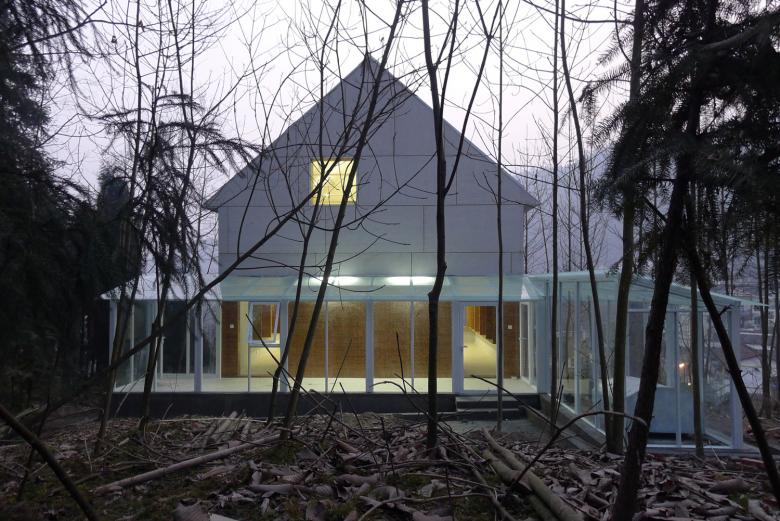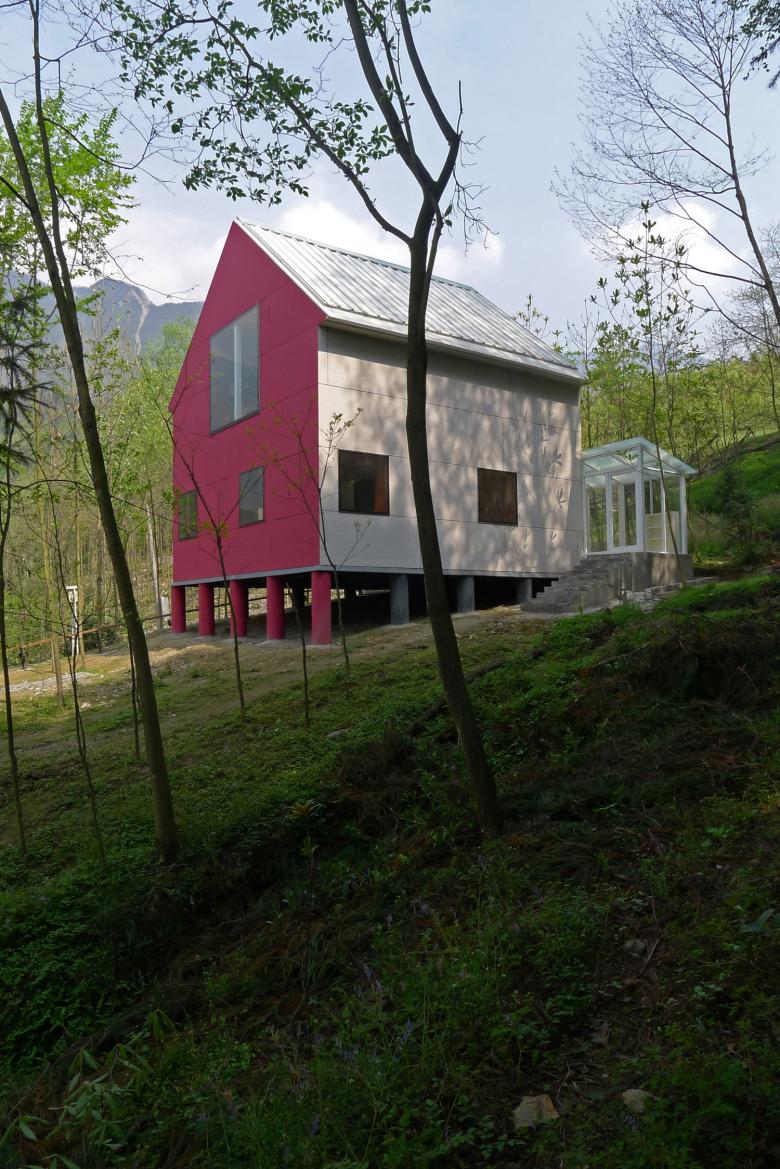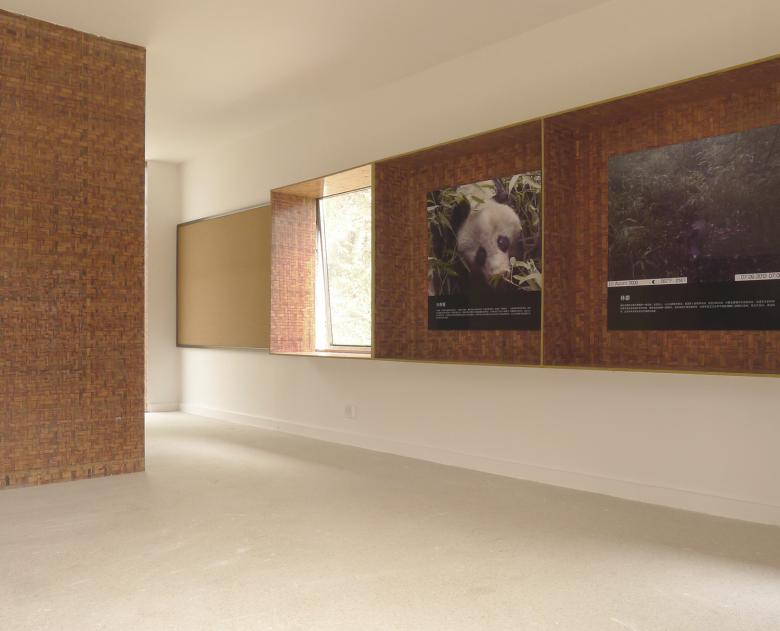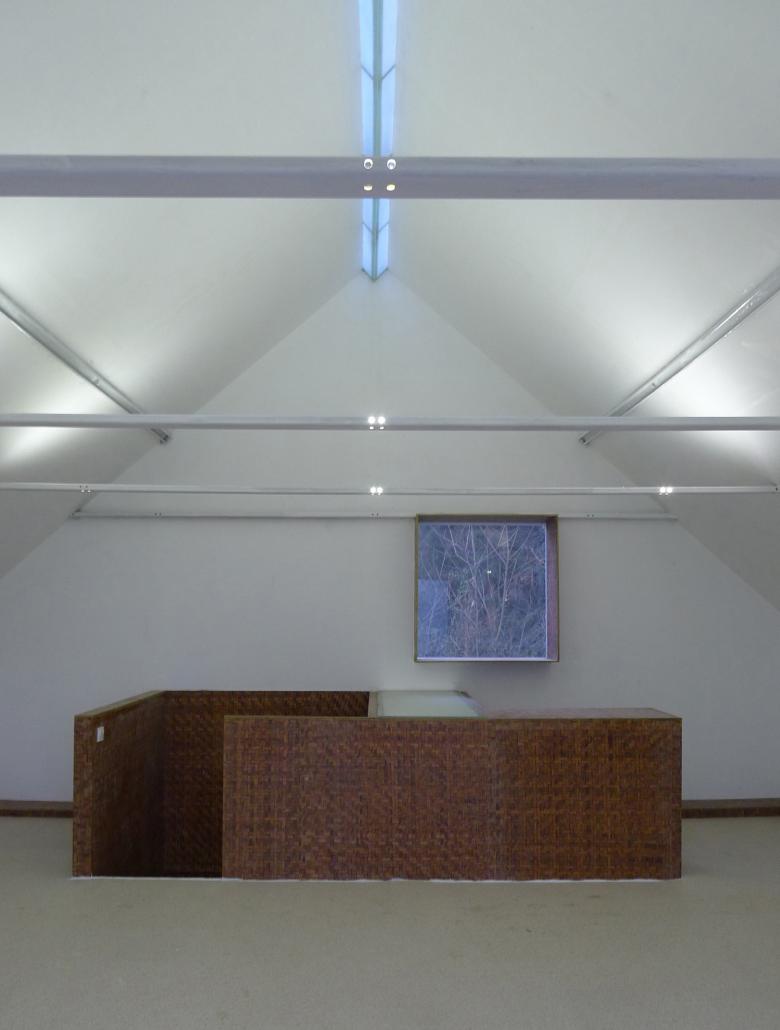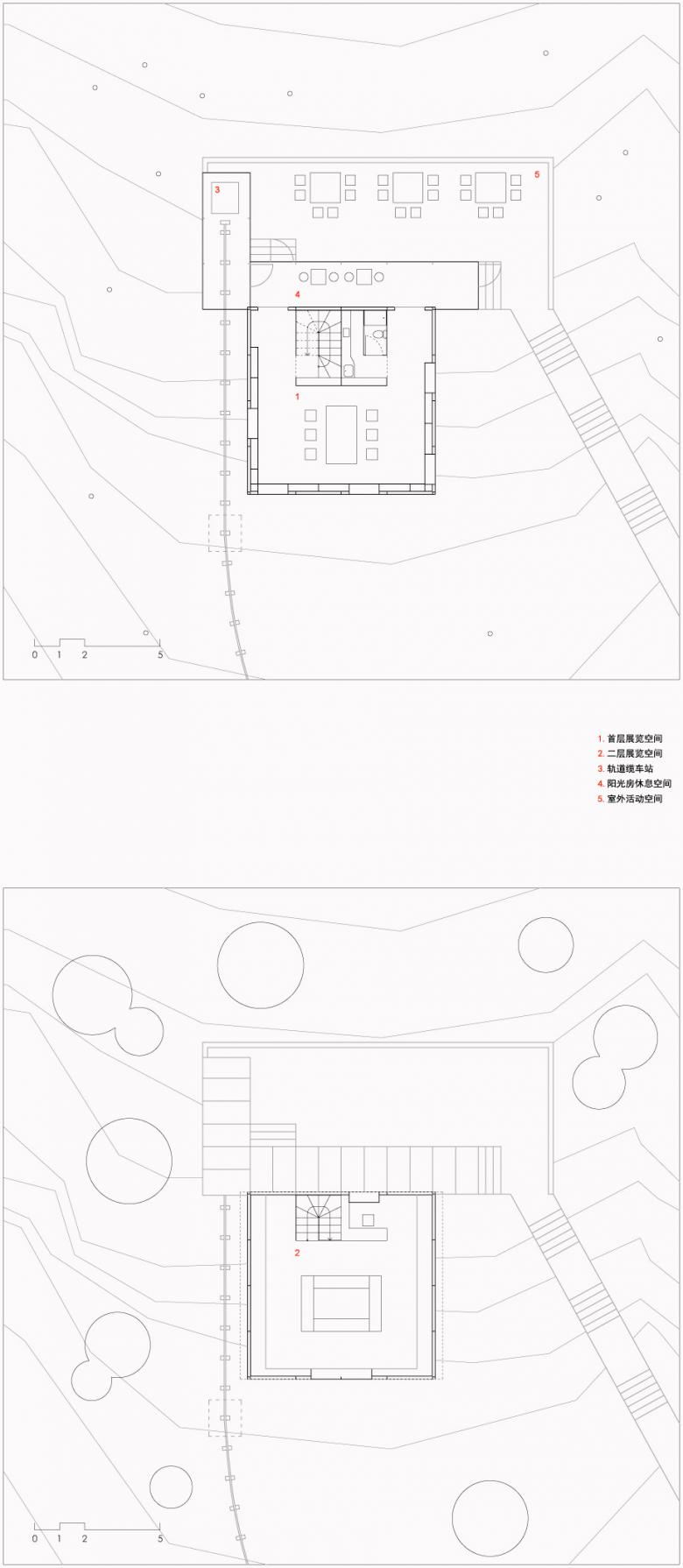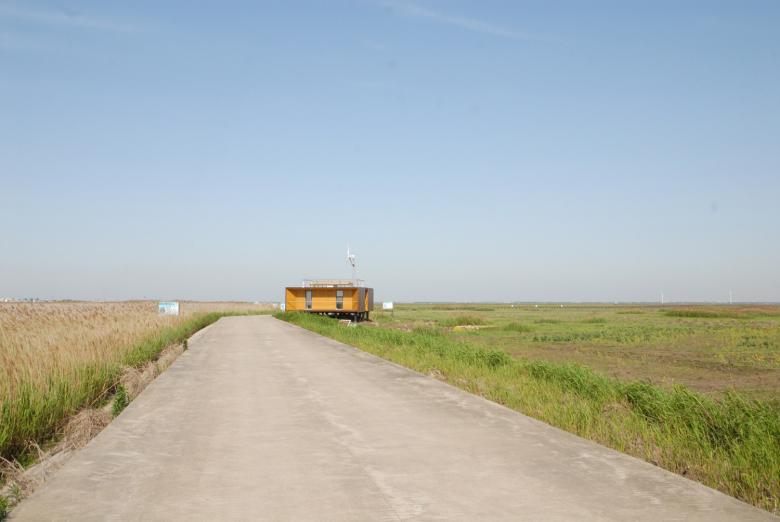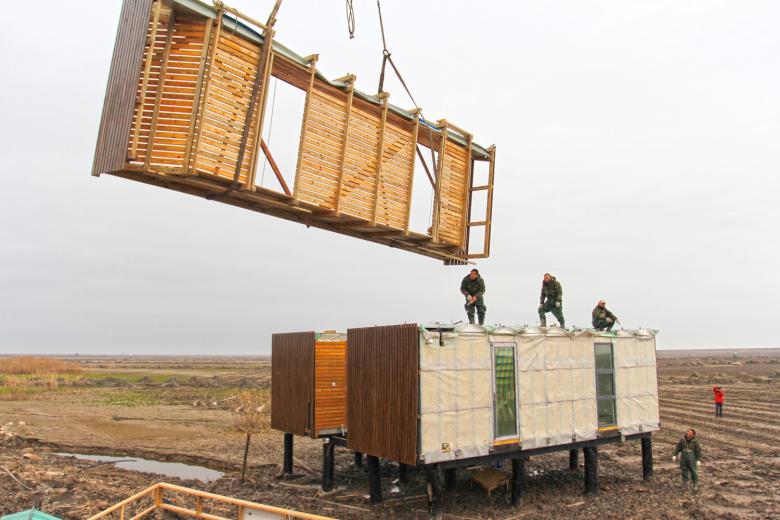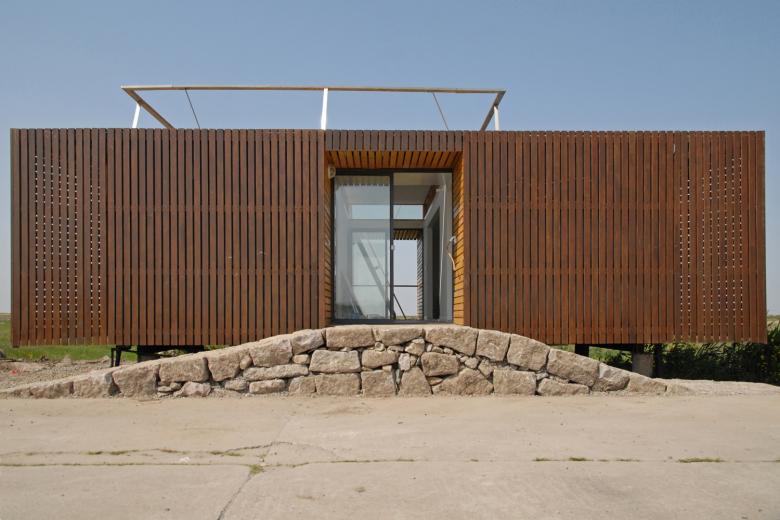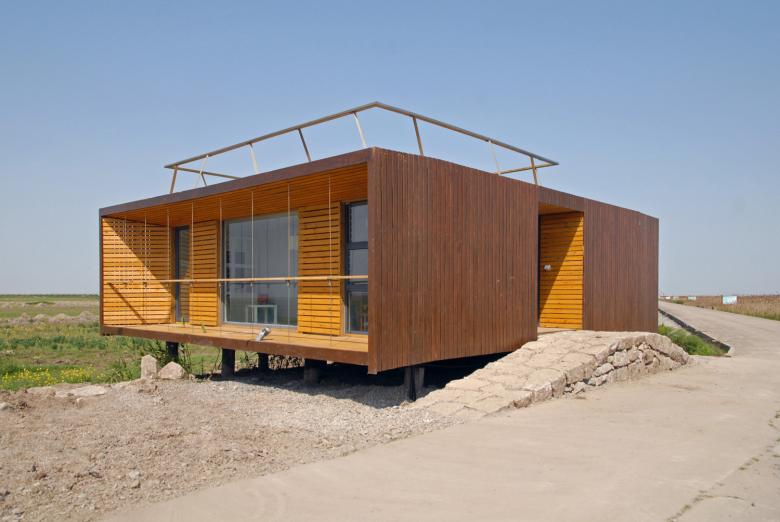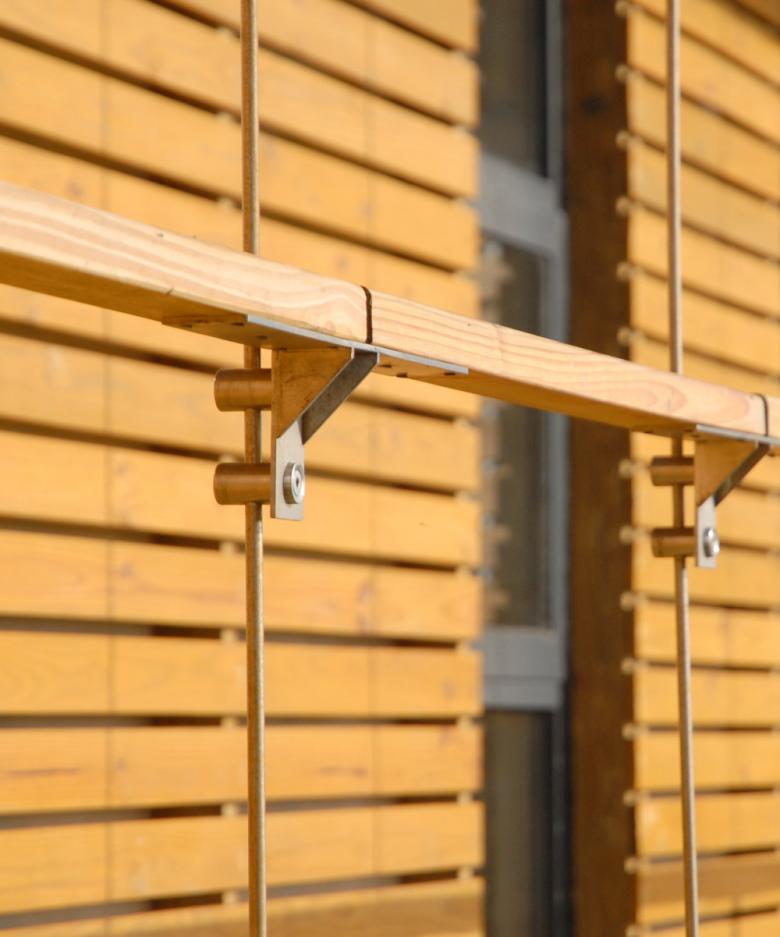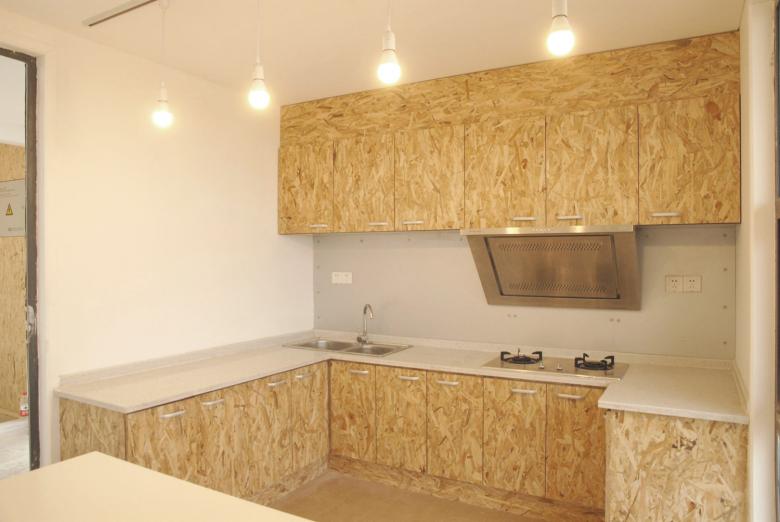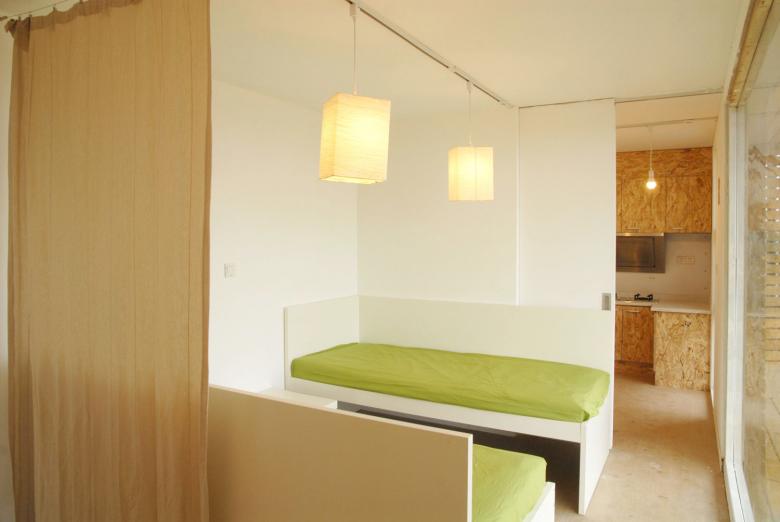Prefabrication for sensitive locations
Prefabrication for sensitive locations
Following the disastrous earthquake in 2008 in Sichuan, a team of architects around Zhu Jingxiang, based at the School of Architecture at the Chinese University of Hong Kong, have developed prefabricated individual solutions for schools or pavilions in remote areas. The guiding idea behind such an approach is simple: the local craftsmen must be able to mount the prefabricated parts with the help of volunteers within a few days.
The World Wildlife Fund for Nature (WWF) has been active in China since 1980 and has run an office in Beijing since 1996. In 2010 the Beijing office had more than 120 staff working on a wide range of topics from wildlife protection to green economy. The programmatic orientation of the organisation called for an architectural program of sustainable and economic solutions.
Baishuihe Nature Reserve
The Wenchuan earthquake in 2008 seriously damaged the region of Baishuihe Nature Reserve, where the last giant pandas live in their natural environment near Pengzhou in Sichuan Province. At the end of 2012, the team around Zhu Jingxiang was commissioned by the WWF to develop a sustainable and earthquake resistant building for an education centre on a hill behind the village of Xiaoyudong. Here, the residents of the neighbouring villages and tourists can learn about the habitat of the giant panda and related environmental issues.
The pavilion is placed among the trees and elevated above the sloping ground on pile foundations. Since the site was not accessible for a crane truck or other heavy machinery, all parts of the prefabricated building were planned in terms of ease of transport and for manual assembly. A small vehicle that runs on rails carried the parts from the valley to the site. Following completion, the vehicle is now used to transport supplies to the education centre.
The simple building’s structure consists of a composite system with a metal frame filled in with prefabricated wood-based panels. The exterior is clad with cement fibreboards. The building is insulated and does not need a heating system, because the staff and visitors, the machinery and equipment, and the solar gain from the integrated winter garden, help to generate a comfortable interior temperature during the cold season.
In the interior the architects used bamboo-laminated plywood for the staircase, kitchen partition, window frames and cabinets. The rest of the interior space is clad with gypsum board. On the second floor a huge window allows a view across the valley, and a skylight at the ridgeline provides the space with additional daylight. The exterior walls are light grey with the exception of the front gable. The imposing form of the two-storey structure with its steep saddle roof and pink gable faces the valley and acts as a signal for visitors to the village.
Shanghai Nanhui Dongtan Sanctuary
In 2012 the WWF also commissioned the group around Zhu Jinxiang with the design for a pavilion building in a wetland sanctuary southeast of Shanghai, in a reclamation area next to the East China Sea and Hangzhou Bay.
The area is an important node for migratory birds on the East Asia–Australia flight path. The brief for the station stipulated that it had to serve scientists, safeguard wildlife and accommodate visiting bird lovers. Due to the remote site, the pavilion needed a self-sustaining power and water system.
From the beginning it was clear that a prefabricated lightweight structure that could act as prototype for further pavilions would be developed. The architects came up with a fully prefabricated timber-based modular system that allows individual composition. The pavilion at Shanghai Nanhui Dongtan Sanctuary consists of two parallel boxes with a platform between them.
The boxes are extended by 1.3 metre deep balcony-modules, which act as shading devices for the window front from the high sun in summer, whereas the low winter sun allows solar gain for the self-sufficient pavilion. The roof of the pavilion is designed as a platform for watching the birds. The prefabricated spatial elements were delivered by truck and quickly assembled on site with the aid of crane truck. Motor vehicle access to the site allowed much bigger prefabricated parts than for the pavilion in Sichuan.
With tailor made solutions for each specific purpose, prefabrication proved an interesting way to save costs and time during the construction. Moreover little expert building knowledge was required on site.
Inspired by the experience and success, the architects have developed further prefabricated lightweight structures for housing, schools or pavilions in remote villages where there is a need for earthquake resistant solutions.
Eduard Kögel
Baishuihe Nature Reserve
2013
Pengzhou, Sichuan
Construction period
Superstructure 25 days
base & landscape 10 days
Planning and construction
9.2012–3.2013
Total floor area
140 sqm
(indoor area: 110 sqm, winter garden: 30 sqm)
Program
Exhibition space, activity & storage spaces, monorail station
Equipment
LED lighting (1.2 kw) + bathroom
unit
Sustainability
Demountable system
Earthquake resistance
(Mercalli Intensity Scale) Degree VIII
Project team Architect
ZHU Jingxiang, XIA Heng, ZHANG Dongguang, HAN Guori
Technical support
YAN Chuanwei, OU Wannian, ZHANG Yanlin,
WU Jimiao, WANG Zheng
Project assistant
PENG Qiang, JIANG Zeyin, ZENG Yan, ZHOU Lijuan
Prefabrication
3 Factories in Chengdu
Assembly
YAHGEE Modular House Co., Ltd. (Chengdu)
Construction Volunteer
SONG Yun, WANG Xilin, ZHENG Chongwen
Photos
Architects
Shanghai Nanhui Dongtan Sanctuary
2013
Shanghai
Construction period
Prefabricated in 50 days
base prepared in three days, assembled in one day
Planning and construction
1.2012–2.2013
Total floor area
92 sqm (indoor area: 70 sqm, covered area: 22 sqm)
Program
Exhibition, office, kitchen, bathroom, temporal sleeping area & storage space
Sustainability
Plywood and pinewood, demountable and reusable system
Equipment
Off-grid solar power, modular LED lighting, rainwater collecting system, multistage septic tank
Project team Architect
ZHU Jingxiang, WU Chenghui, XIA Heng
Structure design
ZHU Jingxiang, HUANG Shi Ping
Environmental design
XIA Heng
System integration
WU Chenghui, LIU Jie
Production design
WU Chenghui, Jamie TSUI
Interior design
HAN Guori, WU Chenghui
Project manager
WU Chenghui
Technical support
YAN Chuanwei, HUANG Fang, BAI Yang, YAN Zhen
Administrative support
PENG Qiang, YONG Yi, WU Zhiping
Assembly support
YAN Juchuan, ZHANG Yongxin, LE Kang, LI Zhaoying,
SUN Lu, JIANG Chen, KONG Rui
Manufacturer
Shenzhen Yuanyuan Modular Building Co. Ltd.
Structural test
School of Civil Engineering, South China University of Technology
Photos
WU Chenghui

